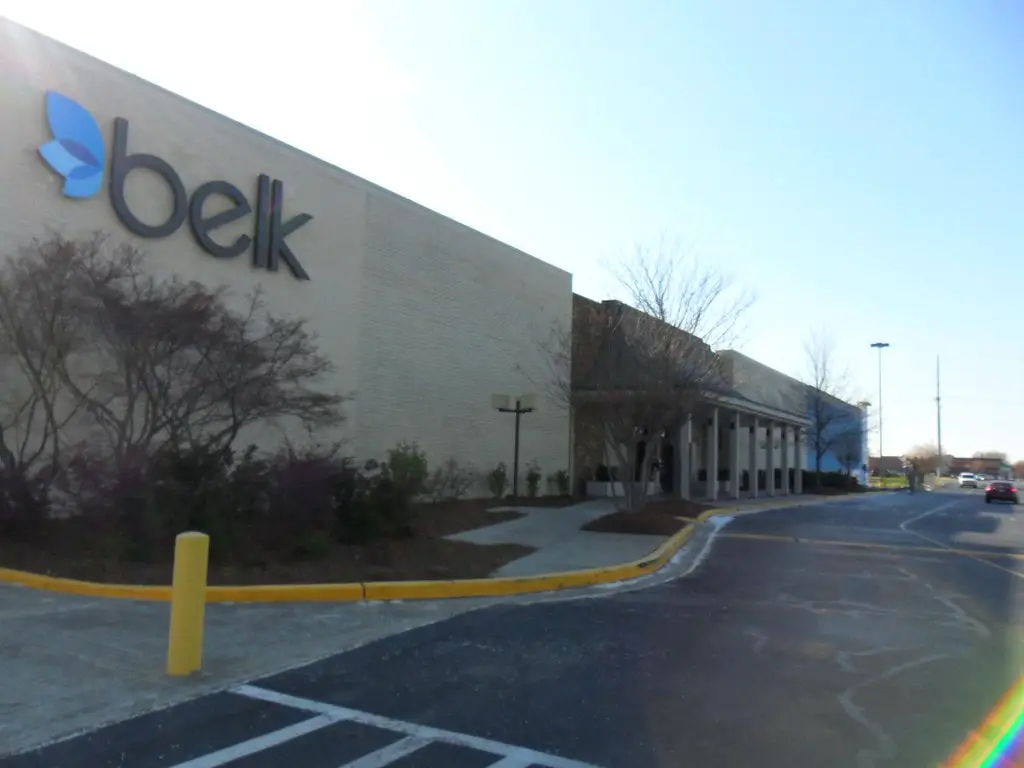History of Monroe Crossing Mall
Nestled in Monroe, North Carolina, Monroe Crossing is a testament to community spirit and commercial resilience. Its story began in 1979 when it opened its doors as Monroe Mall. Quickly embraced by the community, it became a bustling hub for shopping and socializing.
The mall’s first significant transformation occurred in 2001, undergoing extensive renovations. These changes breathed new life into the mall, enhancing its appeal to shoppers.
2005 Madison Marquette acquired the property, ushering in a new era of growth and innovation. The mall was aesthetically improved, and more aggressive leasing practices were introduced.
A second wave of renovations in 2009 further modernized the mall, adding new floors, signage, tenants, furniture, and seating areas. These changes reflected the evolving needs and tastes of the community.
In December 2014, Time Equities, Inc., a New York-based real estate investment firm, purchased the mall. This change in ownership marked yet another phase in the mall’s dynamic history, symbolizing the ever-changing nature of the retail industry.
Anchor Stores and Tenants
The anchor stores and tenants of Monroe Crossing have played a pivotal role in shaping its identity and success. Belk and Roses, the key anchor stores, have been magnets for shoppers, offering various products and services.
The history of other anchors, such as Sears and JCPenney, which closed in June 2017 and July 2017, adds layers to the mall’s rich narrative.

With over 40 stores and services, the mall’s diverse tenant mix caters to various preferences and needs. From popular chains like Bath and Body Works, Best Buy, and Chick-Fil-A to local favorites like Red Bowl Asian Bistro, the mall offers something for everyone.
The opening of Roses in the former JCPenney space in August 2018 is a prime example of the mall’s adaptability and responsiveness to changing retail trends.
The mall’s tenant mix has evolved over the years, reflecting consumer behavior and preferences shifts. This adaptability has helped Monroe Crossing remain relevant and vibrant, even in the face of retail challenges.

Expansion and Development
Monroe Crossing’s growth and development story is one of vision and determination. In March 2008, Belk embarked on a significant expansion, growing from 65,000 square feet to 95,000 square feet. This $5.8 million investment allowed for the inclusion of high-end brands like Michael Kors, Karen Kane, and Ralph Lauren, elevating the shopping experience.
The mall’s continuous efforts to add new stores, make improvements, and adapt to the latest retail trends reflect a commitment to providing a dynamic and engaging shopping environment.
Its strategic location on US Route 74, a primary route to Charlotte, enhances its significance as an economic asset. With more than 54,000 cars passing by per day, the mall’s visibility and accessibility contribute to its success.

Community Engagement and Events
Monroe Crossing transcends the traditional boundaries of a shopping center by actively engaging with the community. The “Just KID-ding Around” club hosts themed events for children and fosters a sense of community and fun. These events provide families a space to unite, creating lasting memories.
Monroe Crossing’s partnerships with local charities reflect a more profound commitment to social responsibility and community well-being. Through various initiatives and collaborations, the mall has become a gathering and celebration place, strengthening its connection with the local community.
The mall’s role in community life extends beyond shopping. It serves as a venue for cultural events, exhibitions, and community gatherings, reinforcing its position as a central hub in Monroe’s social fabric.

Economic Impact and Future Prospects
Monroe Crossing Mall’s economic impact on Monroe, North Carolina, has been significant. As a major employer and supporter of local businesses, it has played a vital role in the community’s economic fabric. However, recent trends and challenges in the retail industry have cast a shadow over the mall’s prospects.
The mall’s adaptability and resilience have been tested as consumer behavior shifts towards online shopping and away from traditional brick-and-mortar stores. Several vital tenants have closed their doors, and foot traffic has noticeably decreased. The once-bustling shopping destination faces uncertainty, with vacant storefronts becoming common.
The mall’s decline is not just a commercial issue; it’s a loss that resonates with the community that has gathered, celebrated, and created memories there for decades.

Conclusion
Monroe Crossing, once a vibrant hub of commerce and community in Monroe, North Carolina, now faces an uncertain future. Its story reflects broader retail trends, where traditional malls struggle to adapt to changing consumer preferences and economic realities.
The mall’s history, from its inception in 1979 to its peak as a bustling shopping destination, is rich and multifaceted. Though gradual, its decline is palpable and brings a sense of nostalgia for what it once was.
Monroe Crossing Mall is more than a collection of stores; it’s a place where generations of families have come together. Its potential decline is not just an economic challenge but a cultural one as the community grapples with losing a familiar gathering place.
The story of Monroe Crossing Mall is not yet over, and its future remains unwritten. It stands as a symbol of community spaces’ potential and fragility. As Monroe looks to the future, the mall’s legacy will continue to be a part of the conversation, a reminder of a shared history and a challenge to innovate and adapt.
